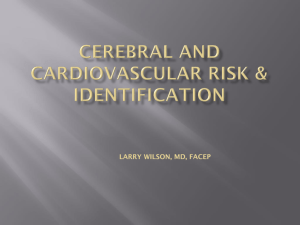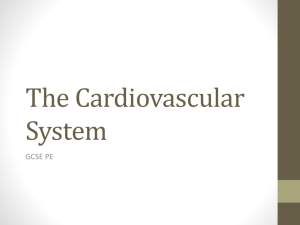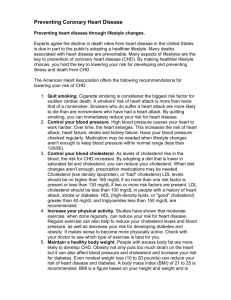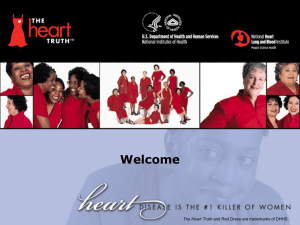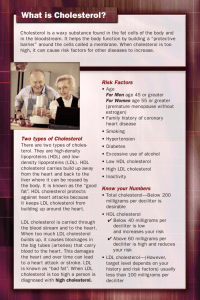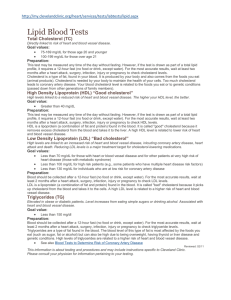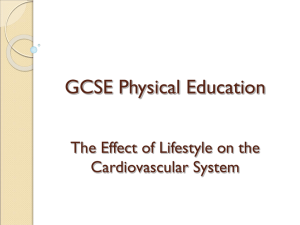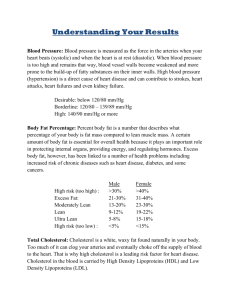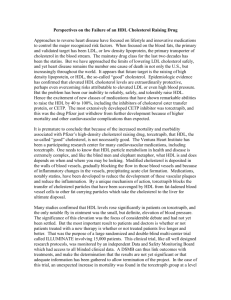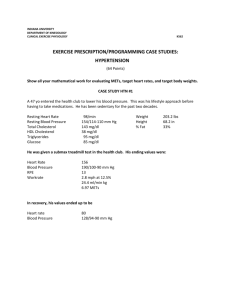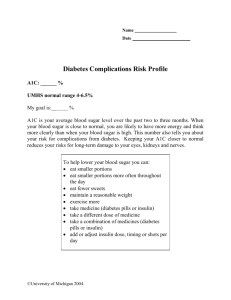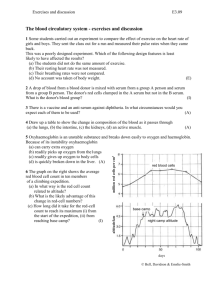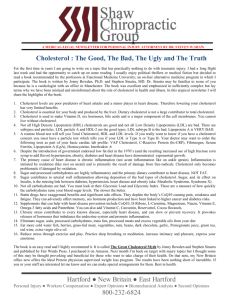Hyperlipidemia
advertisement
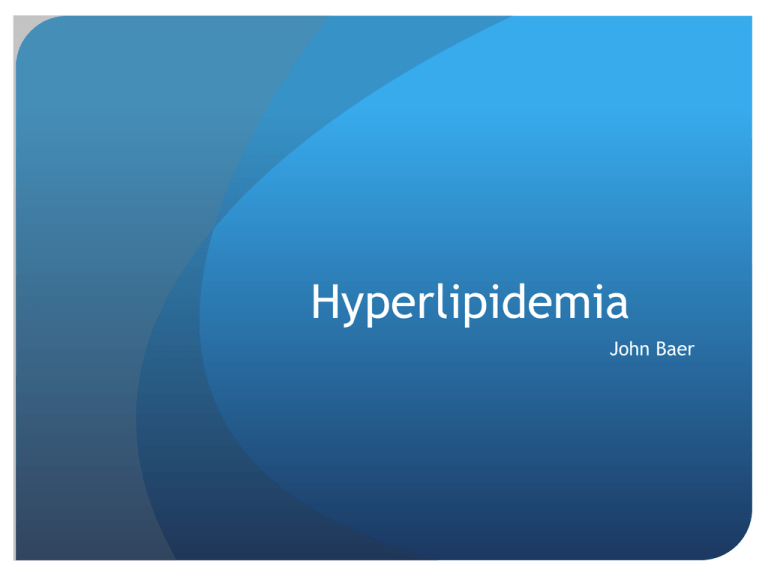
Hyperlipidemia John Baer What is it? Hyperlipidemia- any condition that elevates fasting blood triglyceride and cholesterol concentrations Dyslipidemia- altered blood lipid and lipoprotein concentrations Hypercholesterolemia- elevated cholesterol Hypertriglyceridemia- elevated triglycerides Hyperlipoproteinemia- elevated lipoproteins Hypoalphalipoprotein syndrome- low HDL Postprandial lipemia- postprandial rise in TG rich proteins after eating Understanding http://www.youtube.com/watch?v=NklmCp8pyDM Epidemiology On the decline Average cholesterol went from 213 mg/dl to 203 mg/dl (1978-1994) 17% of adults have cholesterol 240 mg/dl or greater 67.6% had blood checked in 1991 73.1% had blood checked in 2003 Greater awareness Symptoms Cholesterol greater than 240 mg/dl LDL often over 260 mg/dl HDL lower than 40 mg/dl Testing Obtained through complete blood lipid profile from forearm venipuncture following a 12 hour fast Finds total cholesterol, LDL-C, HDL-C, and triglycerides. Complications Dyslipidemia itself is not a complication Patients with dyslipidemia may also have other diseases or disabilities which may prevent them from exercise A thorough medical review must be conducted before any exercise training Treatment Lifestyle changes Medications Lifestyle Changes TLC diet, therapeutic lifestyle changes Fat intake 25-35% total calories Saturated fat less than 7%, polyunsaturated fat 10%, and monounsaturated fat 20% of calories Increases in dietary fiber and plant stanols or sterols Encouraged to eat more fruits, vegetables, and high fiber foods Lifestyle Changes cont. Smoking cessation Exercise Medications If lifestyle changes are not working well enough for 6 months medications used Statin agents are most commonly used Increase HDL and decreases LDL Inhibits cholesterol synthesis Effects of Disease on Exercise Dyslipidemia alone does not affect exercise Cardiovascular disease could cause angina Medications currently taking Medications on Exercise P. 43 Clinical Exercise Physiology Effects of Exercise on Disease Lower triglyceride concentrations Reduced postprandial lipemia Decreased concentrations of LDL Higher HDL concentrations Increases in lipoprotein enzyme activity Improved glycemic control Reduction in adiposity indirectly lowers blood lipid concentrations P. 225 Pollock’s Exercise Testing Follow protocols for populations at risk for CAD Diagnose CAD Determine functional capacity Determine appropriate intensity range for aerobic exercise training High cholesterol may cause ischemia Exercise Programming Aerobic exercise is the foundation of the program Exercise at 40-80% VO2 max 5 or more days per week Once, maybe twice per day Incorporate resistance training in program 45 minutes per session P. 172 ACSM Conclusions Have blood lipids checked every 1-5 years Could prevent CAD and atherosclerosis Eat healthy and exercise References Know the Risks: Lifestyle Management of Dyslipidemia by Paul Sorace, Thomas LaFontaine, and Tom R. Thomas ACSM’s Exercise Management for Persons With Chronic Diseases and Disabilities by J. Larry Durstine, Geoffrey E. Moore, Patricia L. Painter, Scott O. Roberts Clinical Exercise Physiology 2nd Edition by Jonathan K. Ehrman, Paul M. Gordon, Paul S. Visisch, Steven J. Keteyian Pollock’s Textbook of Cardiovascular Disease and Rehabilitation by J. Larry Durstine, Geoffrey E. Moore, Michael J. LaMonte, Barry A. Franklin http://www.google.com/imgres?um=1&hl=en&biw=1235&bih=564&tbm=isch&tbnid=kZA DRt5miFTF5M:&imgrefurl=http://www.medscape.com/viewarticle/480603_3&docid=Qk1 E4OGh_l4YUM&imgurl=http://img.medscape.com/fullsize/migrated/480/603/cvrr48060 3.tab1.gif&w=675&h=614&ei=eJZCT_bYNcKsiQLC8PGYAQ&zoom=1&iact=hc&vpx=402&vp y=29&dur=3444&hovh=214&hovw=235&tx=123&ty=93&sig=113826194840513614201&pag e=1&tbnh=115&tbnw=126&start=0&ndsp=22&ved=0CEsQrQMwAg http://health-club.org/heart-disease-risk-factor

